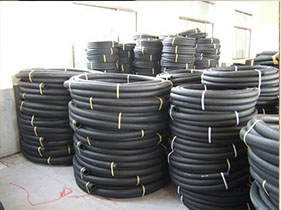1、 Safety and reliability of sand blasting operation
Sandblasting The operation is dangerous. In order to ensure the safety and reliability of sand blasting, the following points must be met.
1) The operator must be healthy.
2) Operators must wear protective equipment that meets safety and health requirements.
3) All accessories must be intact.
4) When working, the nozzle points to the workpiece surface.
5) Before sandblasting, check the wear of all joints, hoses and sandblasting nozzles to ensure that all joints are sealed and work reliably; Check the breathing air filter and air source to ensure normal air supply.
6) Welding and non cutting operations near the sandblasting machine are strictly prohibited.
7) Do not replace parts at will.
8) In case of abnormal conditions, shut down the machine immediately, turn off the power and air supply.
2、 Reduce pressure loss
The pressure loss of compressed air from the air source is inevitable when it reaches the nozzle through rubber hose, connector, filter, control valve, etc. The air pressure loss is inversely proportional to the hose diameter and directly proportional to the hose length.

For this reason, the user is recommended to recommend the following design principles
1) The rubber hose shall be of large diameter as far as possible. However, from the perspective of safety, the sandblasting hose is generally used for 1 inch, and it is not allowed to exceed 32 mm. The air supply hose is generally used for 32 mm, which is equal to or greater than the sandblasting hose. For more than 40 meters, it is recommended to use a 2 inch pipe near the air source.
2) The inner holes of all reducing diameters and joints must be filtered smoothly. The rubber pipe joints should be of outer sleeve type instead of plug-in type.
3) Each valve shall be designed to ensure small pressure loss.
3、 Reasonable and practical structure design
1) The design of the cylinder body of the sand cylinder is based on the natural stacking angle of the abrasive to ensure the smooth and thorough discharge of the abrasive. For the model with one cylinder and multiple spray guns, the problems such as diffluence and discharge are also considered.
2) The mixing chamber of the abrasive valve is structurally formed with suction and pressure hydrodynamic force to make the abrasive flow smooth and mix evenly.
3) The control system combines the reliability of pneumatics with the rapidity of electric control, and realizes a reasonable, practical and advanced control system that can be used for air injection and sand blasting when it is opened, sand and gas when it is closed, and sand and gas are separately controlled.



